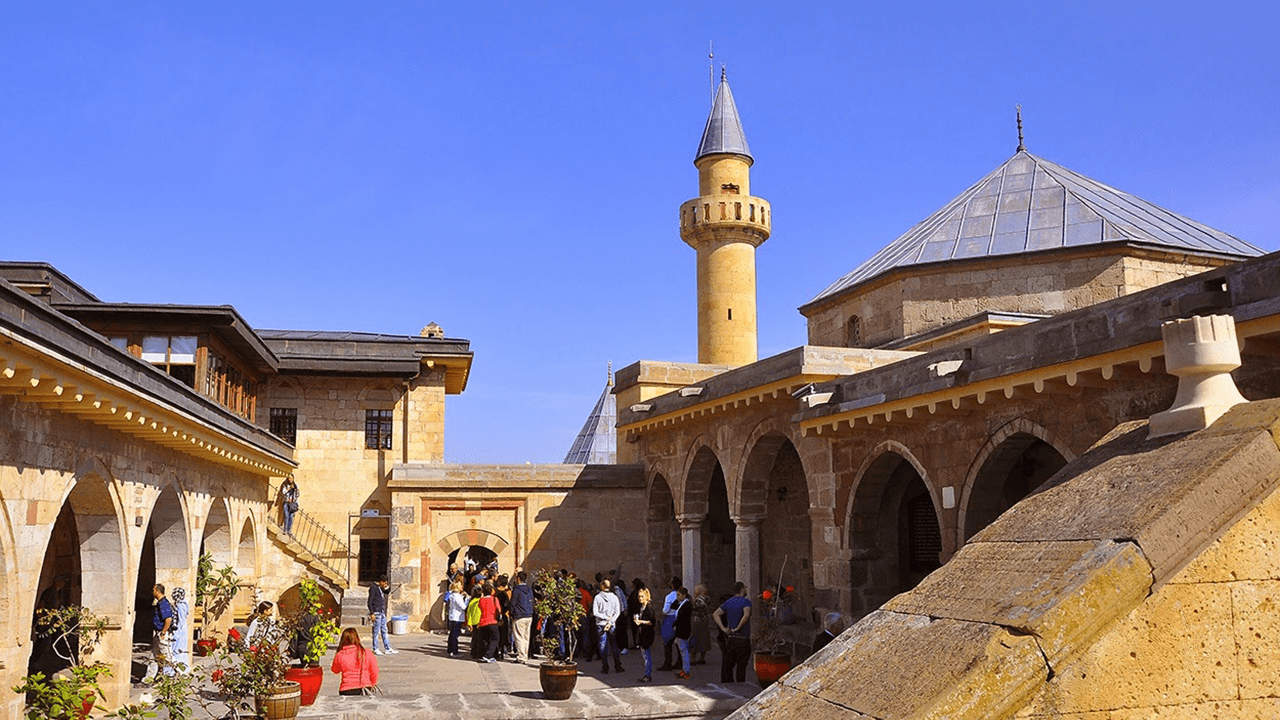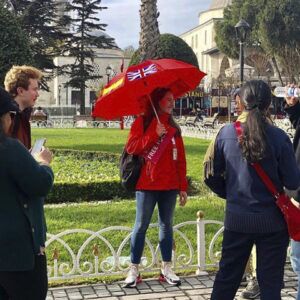Hacı Bektaş Veli Complex: A Spiritual and Cultural Center of Anatolia
The Hacı Bektaş Veli Complex, located in the village of Hacıbektaş, is one of the most significant sites for spirituality and culture in Anatolia. This complex, dedicated to the renowned Islamic philosopher and Sufi leader Hacı Bektaş-i Veli, combines historical, architectural, and religious elements that reflect the rich heritage of the region. Each year, thousands of Sufi followers and visitors from around the world gather here to honor his legacy.
Who Was Hacı Bektaş-i Veli?
Hacı Bektaş-i Veli was born in Nishapur, Khorasan, and was a prominent Islamic philosopher and spiritual leader of Sufism. Upon arriving in Anatolia, he settled in Suluca Karahöyük, today known as Hacımköy, in the Kırşehir region. Through his travels across central Anatolia, he embraced and promoted local customs, earning the respect and admiration of its people.
During the Ottoman Empire, Hacı Bektaş-i Veli played a pivotal role in unifying Anatolia and served as a spiritual mentor to the Janissaries. His influence was so profound that, after his passing, the village was renamed in his honor.
Annual Commemorations
Every August, thousands of Sufi followers gather in Hacıbektaş to participate in ceremonies commemorating him. This event serves as an essential gathering to preserve and transmit his teachings and spiritual legacy.
The Hacı Bektaş Veli Complex
The complex, a renowned pilgrimage site, is divided into three main courtyards, each featuring structures that provide a unique glimpse into the spiritual and daily life of the era. These courtyards are interconnected, offering visitors an immersive experience of the site’s history and religious practices.
First Courtyard
The entrance to the complex leads to the first courtyard, a welcoming space for visitors. Here, the main garden features statues, fountains, and a serene atmosphere that invites reflection.
Second Courtyard
The second courtyard is the center of community activities. It houses several important structures, including:
- The Refectory: Where dervishes and students shared meals.
- The Guesthouse: A space for travelers and pilgrims.
- The Mosque: A site of prayer still used by visitors today.
- The Kitchen: A representation of the complex’s traditional culinary practices.
Third Courtyard
The third courtyard is the most sacred area of the complex, renowned for its architecture and symbolism. Key features include:
- The Mausoleum of Hacı Bektaş-i Veli: Built of marble, this is where the philosopher’s remains rest.
- Dervish Tombs: Honoring Hacı Bektaş-i Veli’s close followers.
- The Ceremony Hall: A space used for rituals and spiritual gatherings.
- A Hamam: Reflecting the purification and cleansing practices of the era.
Cultural and Spiritual Significance
The Hacı Bektaş Veli Complex is not just a site of religious pilgrimage but also a cultural center reflecting Anatolia’s rich history. Its architecture, grounded in principles of harmony and simplicity, invites visitors to connect with the core values of Sufism, such as humility, generosity, and spiritual unity.
Impact on Education
The complex also played a vital role in educating the Janissaries, who received spiritual and ethical guidance rooted in Hacı Bektaş-i Veli’s teachings. This educational approach helped consolidate the cultural and religious identity of the Ottoman Empire.
Practical Information
- Location: Hacıbektaş village, Central Anatolia.
- Hours: Open daily from 8:00 AM to 6:00 PM.
- Admission: 20 TL per person.
- Access: Accessible via public transportation or organized tours from Nevşehir or Kırşehir.
Conclusion
The Hacı Bektaş Veli Complex is a unique destination that combines spirituality with history, offering visitors an enriching and meaningful experience. Whether visiting for religious or cultural reasons, this complex stands as a living reminder of Hacı Bektaş-i Veli’s enduring impact on Anatolia and the Islamic world. It is undoubtedly a must-visit destination for anyone seeking to explore Turkey’s rich heritage.



3 thoughts on “Haci Bektas Veli Complex”
★★★★★
Exploring ‘Haci Bektas Veli Complex’ exceeded all my expectations. A perfect combination of culture, beauty, and knowledge.
★★★★★
I was blown away by everything ‘Haci Bektas Veli Complex’ has to offer. Definitely a place to return to in the future.
★★★★★
The charm of ‘Haci Bektas Veli Complex’ captivated me entirely. It’s a destination that leaves no one indifferent.